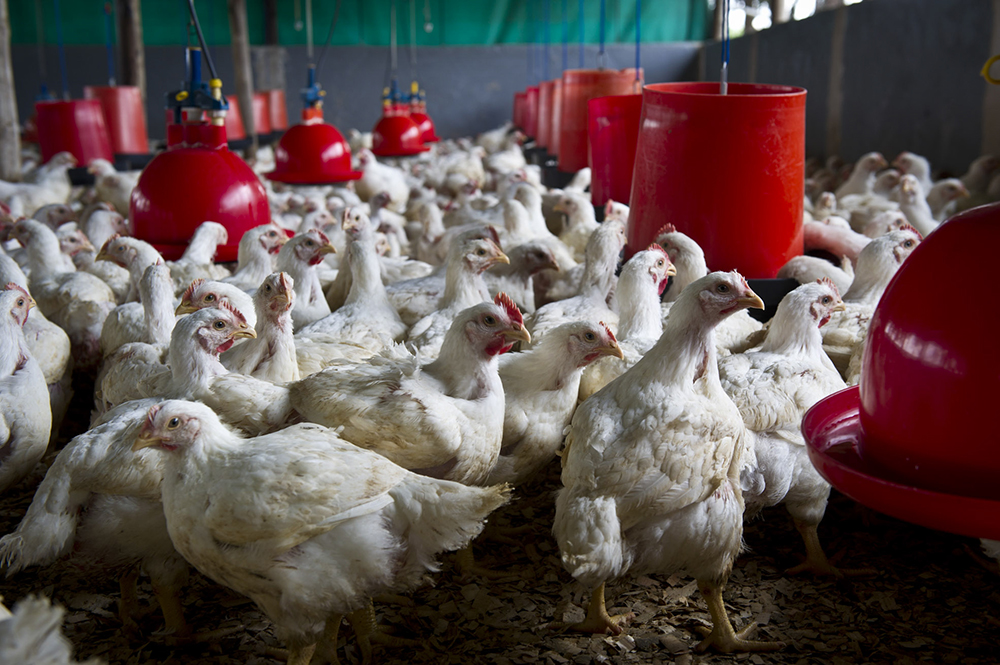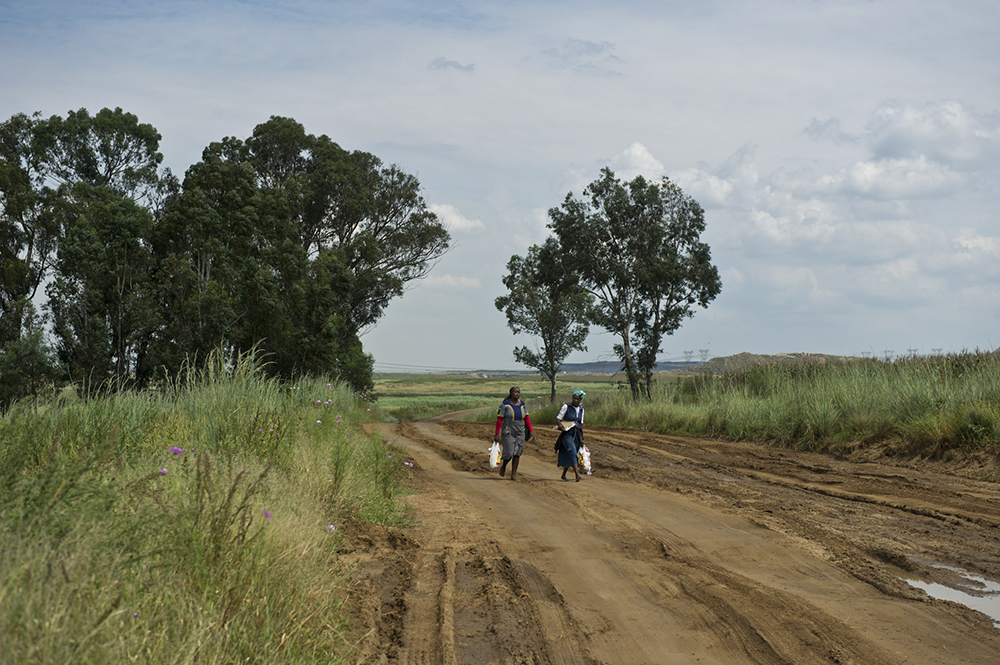The mines at Brakfontein are slowly swallowing up agricultural land and wetlands.
“We are told that we should live next to mines and be good neighbours. But they don’t return the favour.”
Johan Gericke farms chickens on a gentle hill in eastern Mpumalanga, a hill that is being blasted apart and dug open because of the thick seam of coal that runs beneath it. The mine responsible for this is owned by Tegeta Exploration and Resources, which is in turn majority-owned by the Gupta family.
Brakfontein mine has had a stop-start life, but mining there has been accelerated since the signing of a R400-million contract to supply Eskom with coal.
The original mine, surrounded by thirsty mealie fields, has courted legal controversy for several years. In 2013, its managers told a public meeting that it was applying for a section 24G rectification. This was because “various listed activities have commenced” but “the necessary environmental authorisations under the Act are not in place”.
This rectification allows companies to retroactively get permission for work done without a licence. The water department suspended operations at the mine because it was operating without a valid permit.
These issues have since been resolved, and a new pit has been opened on the opposite side of the R50.
The public road is so rutted from heavy mining trucks that driving on it leaves one with the same feeling as weaving over a choppy sea.
Gericke has been meticulously photographing the extension mine on his battered Samsung phone. A green quadbike allows him to travel around its perimeter, checking for any problems. The photos are critical, because they come with a time–stamp and geo-location.
“If I just talk then you can call me a liar. When I have photos I can stand up and say you are doing wrong.”

A series of photos from 2013 show pipes releasing water from the original mine into the surrounding mealie fields.
This water flows downhill into the Wilge River, a tributary of the Olifants River. Gericke complained. His thick file of anything relating to the mine shows that Tegeta rejected his assertion.
Pictures from last year show a muddy pit in the new mine, filled with water. The mine’s various permits, of which the Mail & Guardian has copies, show that the pit should be lined so that polluted mine water cannot leak into groundwater.
Gericke complained and, he says, the pit has since been lined.
But pictures taken during the heavy rains of February show water flowing down the rutted dirt track that leads out of the mine on to the R50 and then into the Wilge River.
Tegeta’s water licence says any stormwater leaving the mine “must in no way be contaminated by any substance”.
It also says the mine must “install and monitor” devices to measure how much water is being taken out of the mine. Interested and affected parties must be given water quality results.

Farmers in the region say their poultry is at risk from mine pollution. (Photos: Delwyn Verasamy, M&G)
At a community meeting organised by the mine last year, several farmers said the possibility of water pollution is their greatest concern.
Gericke spent months asking for water test results. Last month, Tegeta emailed him the results from his own borehole but nothing from the mine.
These showed that his borehole water is still clean.
But he has pictures from a fountain on his farm where the water had turned into the colours of a rainbow – the signature of oil in water. Oil has also become the main component of local dust. Instead of grey particles that break into their smallest components when rolled together, the black dust that now prevails sticks together to make chains of mud.
“I know they are polluting the air and I have no proof that they are looking after our water,” says Gericke. “I want to have a tour of the mine so they can show me the boreholes where they are supposed to test the water. I don’t believe they exist.”
An Oakbay mine spokesperson says the Brakfontein has a water licence, which had not been revoked.
No formal complaints have been received with regards to the mine, they say. “The Brakfontein facility is run to the highest environmental and health and safety standards and we are compliant with all regulations.”

The Tegeta mine is majority-owned by the Gupta family.
An inspection was conducted by the water and sanitation department in early March, following community complaints. Sputnik Ratau, the department’s spokesperson, says the inspection looked solely at the issues raised in the complaint.
This found no evidence of water flowing from the mine into the Wilge River, he says. A comprehensive audit will be conducted later this month, he says.
This will look at the “mine’s compliance status against its water use licence conditions”.
The audit is regular, following a similar one in 2013.
Ratau confirms that operations at the mine were stopped in the past, but that this was before the mine was issued with a water-use licence.
In an attempt to follow the path water takes out of the second mining pit, the M&G’s photographer ran into irate security officials. They warned of the dangers of walking around a mining area without a helmet but couldn’t say he was trespassing because there are no fences around the perimeter, or signs.
Tegeta’s licence specifically says: “Notices prohibiting unauthorised persons from entering certain areas, as well as internationally acceptable signs indicating the risks involved in the case of unauthorised entry, must be displayed along the boundary fence of these areas.”
Seen from space, Brakfontein is rapidly swallowing up the fields and wetlands around its two mines. In some cases, farmers have sold their land and moved away.
But those who are left have to fight against – and police – a mine that they say is a bad neighbour.
Poor administration and lack of oversight
Brakfontein is not unique when it come to troubles with legislation. South African mines have a long record of walking on both sides of the legal requirements.
Six thousand have simply shut down, leaving the state and locals with the responsibility for cleaning up after them.
But mines say the problem often lies with difficulties in getting a licence and waiting for permits. The water affairs department often has a backlog of hundreds of applications for water licences, so mines start operating without them.
A change in mining law two years ago shifted responsibility for environmental oversight from the environment department to the minerals department. Given how long it takes mines to get permits, many are now stuck between the old and new compliance regimes.
Oversight is also in short supply, thanks to a lack of enforcement officials.
At a provincial level, minimal training means mines cannot be scrutinised. So mines go ahead with operations, knowing they can retrospectively apply for permission. That is, if they get caught.